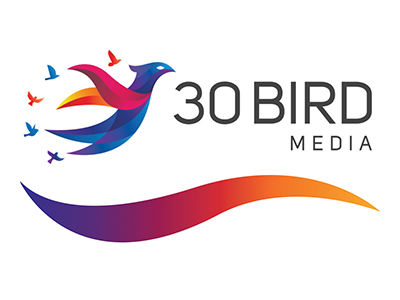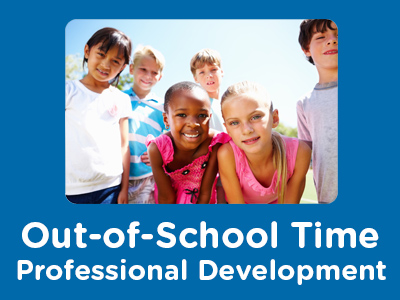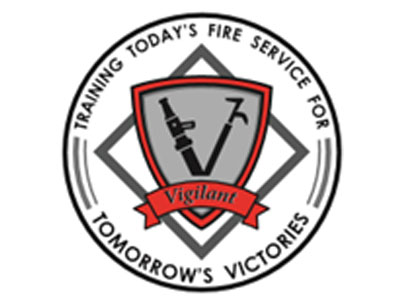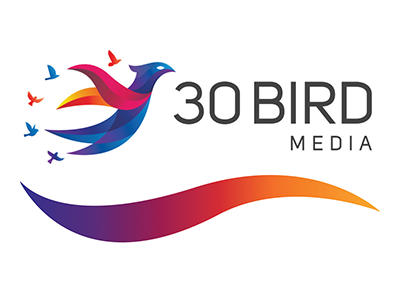 |
Cultural Competence: Diversity, Identity, and Engagement |
2.00 |
Many programs engage children, youth, families, and staff from diverse cultural backgrounds. In order to best serve their community, out-of-school time program staff need to develop the vocabulary and skills to engage with people from different cultures. During this course, participants will explore how culture can impact and shape individuals, examine their own cultural identities and how these identities may impact their interactions with others, and levels of engagement with diverse groups. |
 |
CompTIA A+ Certification Comprehensive - Exams 220-1101/220-1102 |
40.00 |
CompTIA A+ Certification Comprehensive - Exams 220-1101/220-1102 provides the basic knowledge needed to install, configure, and support computer software and implement networking. This includes:
- Applying basic methodical troubleshooting skills as an IT technician
- Identifying motherboard and CPU components, installing or replacing them, and troubleshooting their functions
- Identifying power supply functions and connectors, installing them into a PC, and troubleshooting power issues
- Configuring BIOS/UEFI firmware, identifying and installing RAM, and troubleshooting memory issues
- Comparing internal and external expansion buses on a computer, installing internal cards, and identifying expansion cables and connectors
- Distinguishing between physical storage technologies, installing drives, and troubleshooting storage problems
- Connecting, configuring, and troubleshooting common input-output devices
- Describing common printing technologies, installing and maintaining printers, and troubleshooting printing issues
- Identifying client operating system features, installing Windows and application software, and working with scripts
- Managing and troubleshooting operating systems using built-in administrative tools, such as the Windows Control Panel, Windows Settings, and command-line utilities
- Describing network principles, network devices, and internet connection technologies
- Identifying and categorizing network cables and connectors
- Configuring and troubleshooting issues related to TCP/IP and other network protocols
- Describing common wireless networking standards and encryption methods
- Configuring and troubleshooting problems with Windows resource sharing and network connections
- Identifying and using virtualization technology and cloud computing services
- Identifying types of mobile devices and operating systems, and configuring and troubleshooting mobile devices
- Recognizing common cybersecurity threats and the security controls which are used to reduce risk
- Identifying and using security features built into operating systems, as well as security hardware and software used on workstations and networks
- Securing workstations and mobile devices against security risks, and troubleshooting common security issues such as malware infection
- Applying best practices in IT operations, including policies, documentation, ticketing systems, incident response, and data backups and recovery
This course maps to the CompTIA A+ Certification 220-1101 and 220-1102 certification exams. You can download an objective map for the course from 30bird.com.
This course assumes that you have basic computer knowledge.
For exam practice, use the separate Exam Preps for exams 220-1101 and 220-1102:
- CompTIA A+ Core 1 220-1101 Exam Prep
- CompTIA A+ Core 2 220-1102 Exam Prep |
 |
Exploring Developmental Needs and Characteristics of Different Age Groups |
2.00 |
Certain developmental needs and traits are associated with younger school-age children, while others are typical of older school-age children and youth. While the differences between school-age children of different ages are not clear-cut, there are some general traits and tasks that are often associated with younger (ages 5 – 7), middle (ages 8 – 10), and older (ages 11 – 12) school-age children and youth. Understanding these differences helps staff plan appropriate activities and guidance strategies for children of different ages. |
 |
Providing Homework Support: Types of Homework Support |
1.00 |
Research indicates there are many different ways to provide effective homework support in school-age programs. When planning a homework support program, it is important for school-age programs to develop a homework philosophy that is consistent with the program’s overall philosophy, and reflects current research on best practices for providing homework help. The homework philosophy should also reflect the needs of parents and children in the program, and strike a balance between homework needs and other experiences that help children grow and learn out-of-school. In this course, we will explore the various types of homework support. |
 |
Correcting Performance Problems: Disciplining Employees (Instructor Guide) |
1.67 |
Discipline is proactive, as opposed to punishment, which is reactive. Punishment provides a consequence to an action that is deemed unacceptable, whereas discipline is designed to exchange undesirable behavior for satisfactory behavior.
The purpose of disciplining an employee is twofold:
1. To correct or eliminate undesirable behavior, and
2. To provide training that improves or strengthens performance.
In this course you will learn to: keep a disciplinary perspective, determine the cause for disciplining an employee, and prepare for conducting a disciplinary meeting, maintain a positive rapport, avoid pitfalls during a disciplinary meeting with employees, and keep meetings productive, and monitor employee performance and conduct a follow-up meeting with the employee.
This Instructor's Edition of this course includes notes and suggestions to assist you in presenting the material, whether in an in-person classroom setting, or as an instructor-led online or distance-learning course. It also provides you with the answers to questions found in mid-lesson activities, as well as in the quiz that concludes the course. |
 |
Leading with Head and Heart |
2.00 |
Those in leadership positions have a responsibility to both lead and manage.During this course, participants will understand the differences between the leadership and management, and the steps we can take to cultivate both. Participants will explore how leaders create safe, supportive environments by modeling self-awareness, interpersonal skills and growth mindset in how we lead and manage. |
 |
Communicating with Families |
2.00 |
Communication and positive relationships with families improve when program staff recognize family members as partners. Staff can benefit from acknowledging their feelings about families and identifying how these feelings help or hinder working with families. This course provides participants the opportunity to identify their attitudes towards families, consider how their attitudes can enhance or detract from their ability to develop positive relationships with families, and examine how a program’s overall environment supports strong staff-family communication. |
 |
Project Management - Advanced: Project Integration and Plan Development |
0.50 |
This course will cover how to measure data during project integration and differentiate between project and product life cycles. You will also learn how to identify the importance of developing a project plan, the elements of a project plan, the key input required for project plan development, and methods used in project plan development. |
 |
Managerial Leadership: Defining Employee Roles and Priorities |
1.50 |
A vision is created by an organization to inspire its members to work together to reach for an ideal of what the organization can become. The members of the organization should use the vision as the standard to determine the day-to-day functions of their individual roles. The vision is the guide to use every time an action is taken, a decision is made, or a plan is developed to improve the organization or the people in it. An organization’s vision should enable the members in every role to do what is in the best interest of the organization.
In this course you will learn to: determine leader roles and strengthen employee roles, and align employee priorities and evaluate employee performance. |
 |
OSTPD - Supporting Attendance through After School Programming |
1.00 |
This training will cover a number of areas regarding how after school programs can support youth attendance in school. By looking at and exploring the connection between after school programming and attendance in school, we see how after school programming supports attendance at school as well as how to coordinate with the school in order to maximize the positive impact of after school on school attendance through collaboration. |
 |
Coaching: Communication |
1.00 |
Language is an important coaching tool. The use of suitable words during coaching will help you create relationships, repair employee confidence, and establish plans for employee success. As a coach, you must select words that directly influence your employees’ attitude, behavior, and performance. The use of appropriate language during your coaching sessions will help you convey your messages in a clear and encouraging manner.
In this course you will learn to: clearly express your message by using appropriate language, identify and use nonverbal methods of communication, and receive the desired information by asking effective questions. |
 |
I Belong: Supporting Social Awareness and Interpersonal Skills |
2.00 |
We all have lived full lives with varied experiences, both positive and negative. Whether we are aware or not, our experiences, including our social, political and cultural beliefs and background, affect our practice with youth. During this course, participants will learn about how culturally grounded beliefs and background affect our practice with youth, how to help raise our awareness of those factors, and reflect on current and new strategies that support the development young people’s social-awareness and interpersonal skills. |
 |
Connection Planning in Long-Term Care |
1.00 |
This module includes training for staff and providers in the importance of social connection and practical strategies learners can use to promote social connectedness in long-term care. The module explains how to implement Connection Planning, a brief, person-centered behavioral intervention for developing resident care plans that address social connection. Connection Planning includes evidence-informed, practical strategies to promote meaningful social connection among residents in long-term care. |
 |
Making Your Home A Safer Place |
0.75 |
This course covers household safety. This includes fire and kitchen safety, emergencies, infant safety, and more. This course will help you learn about the best practices for everyone inside the house, from infants to pets. It is just one of the many health and safety courses we offer. |
 |
Electrical Safety |
0.75 |
This course covers OSHA’s role and standards regarding electrical safety/hazards, defines the basic fundamentals of electricity, identifies and recognizes safety hazards, and describes protection methods against electrical hazards.
|
 |
Team Participation: Nonverbal Communication and Active Listening |
0.75 |
This course will focus on how to identify types of nonverbal cues and how they mesh with verbal messages, identify the characteristics of active listening and become an active listener, and respond to input in a productive manner. |
 |
Project Management Essentials: Activities and Dependencies |
0.75 |
This course will focus on how to identify project activities and recognize the types of project activities and the categories of dependencies and dependency relationships, analyze activities by creating an activity analysis form, and estimate the time duration and cost of project activities. |
 |
Interior Attack Operation #1121 (Instructor Guide) |
1.00 |
This is the instructor guide for the Interior Attack Operation Drill. This course will prepare the instructor to present and conduct this training session to an audience of firefighters. Course set-up requirements are described along with identification of key points and instruction for the demonstration and performance of the skill requirement of this training. |
 |
Understanding the Behavior of Children and Youth |
2.00 |
The development of children and youth can cause them to behave in ways that can be trying for even the most knowledgeable and experienced staff. When staff understands what is driving the behavior, they can help to guide and encourage acceptable behaviors. This course will provide participants with the knowledge and skills necessary to prevent unwanted behavior by meeting the needs of children and youth before they act out. |
 |
Elder Abuse Prevention |
1.00 |
In this course, you will learn about the prevalence of elder abuse and define the scope of this hidden epidemic. You will learn about the different types of abuse, your role in caring for elders, how to recognize signs of abuse, what to do if abuse is suspected, and how to help prevent it.
|
 |
Microsoft Project 2021/365 Complete |
16.00 |
30 Bird Media's Microsoft Project 2021/365 Complete courseware covers the concepts and skills needed for maximum productivity in Project, starting with fundamentals and working up to advanced tools and techniques.
There are no specific prerequisites for this course. However, general computer user knowledge is assumed. Any additional experience having worked with forms and/or databases will be helpful.
You will benefit most from this course if you have at least some prior knowledge of project management procedures and practices. It is intended to support you in applying this knowledge through the use of Microsoft Project as a project management tool. |
 |
Presentation Methods and Debriefing Activities |
2.00 |
There is no "one size fits all" approach to working with children and youth, and this is especially true when it comes to how we present and debrief activities. During this course, participants will understand the importance of the delivery and debriefing of an activity to help children and youth make meaning, as well as some specific methods that can be incorporated into the program right away. |
 |
Suicide in Older Adults |
1.00 |
In this course you will learn about: The demography of aging and suicide; Risk and protective factors; and approaches to prevention, including indicated, selective, and universal prevention. |
 |
Project Management - Intermediate: Risk Analysis, Response, and Control |
1.00 |
This course will cover how to identify the goals and benefits of risk assessment and follow the qualitative risk analysis process and how to use the quantitative analysis techniques and draw a decision tree. You will also learn how to follow the risk response process and identify the categories for possible risk response plans and how to use the methods of monitoring and controlling project risks and identify the outcomes of monitoring and control. |
 |
Human Relations Skill Development: Focus on Leadership Styles and Conflict Management |
2.00 |
Research indicates that those in positions of leadership use a variety of different leadership and management styles. A person’s effectiveness as a leader is often directly linked to his or her leadership style. It is important for OST professionals to be aware of the assumptions and characteristics of different leadership styles. Knowledge of different leadership styles can help OST professionals reflect on their own leadership style and assess its effectiveness. It can also help OST professionals take a proactive approach to applying different leadership styles and techniques, depending on the situation.
Leaders also use a variety of different styles when it comes to managing and resolving conflicts. By understanding how to diagnose the causes and dynamics of conflict and understanding the characteristics of different conflict management styles, OST professionals can choose the best conflict management strategy for each situation.
There are a number of skills that enhance the ability of OST professionals to employ different leadership and conflict management styles effectively. When OST professionals are aware of these skills and their own skill levels, they can set priorities for ongoing development of leadership skills. |


























